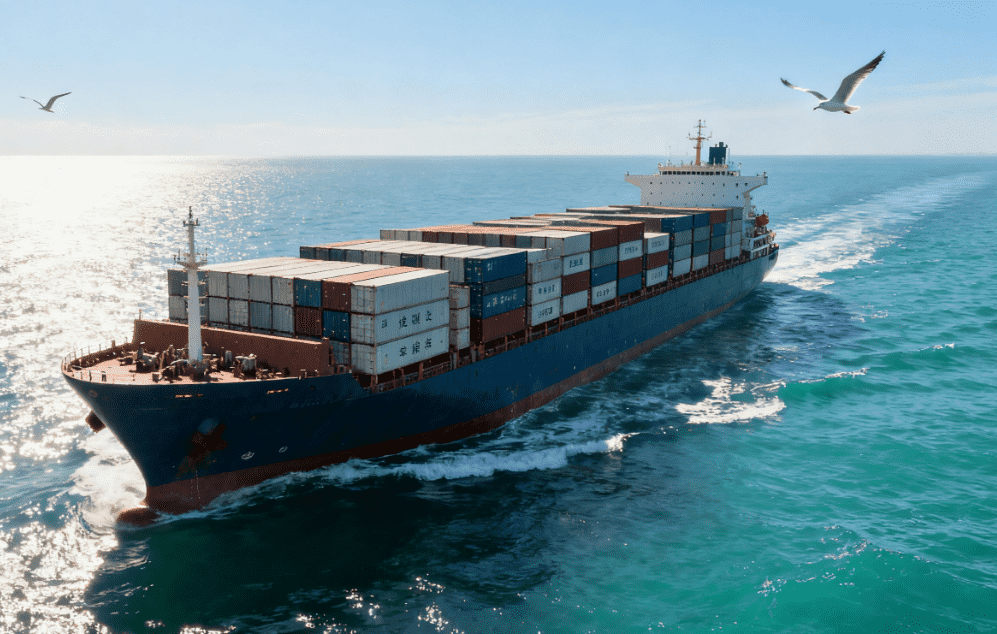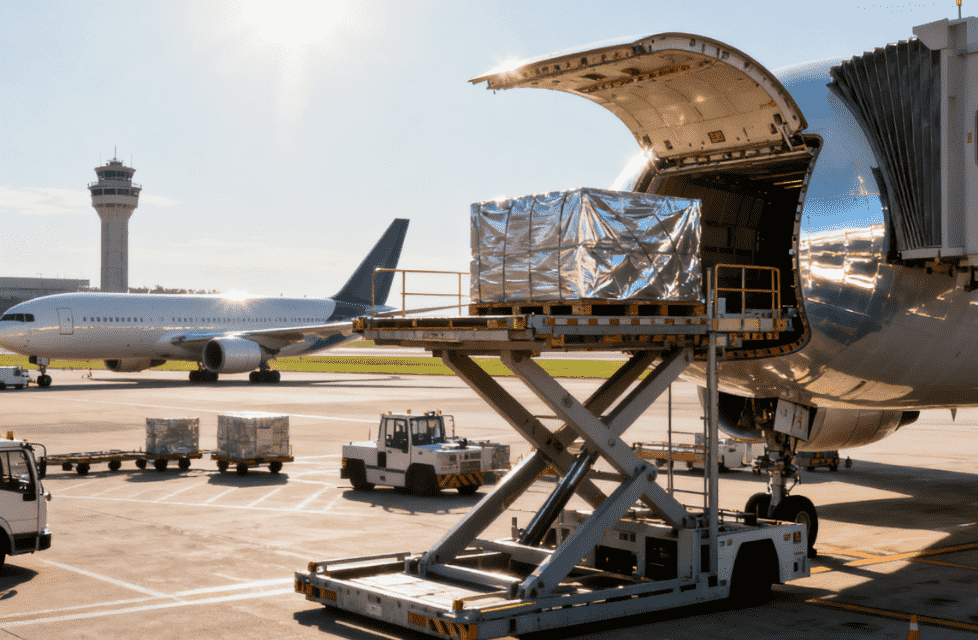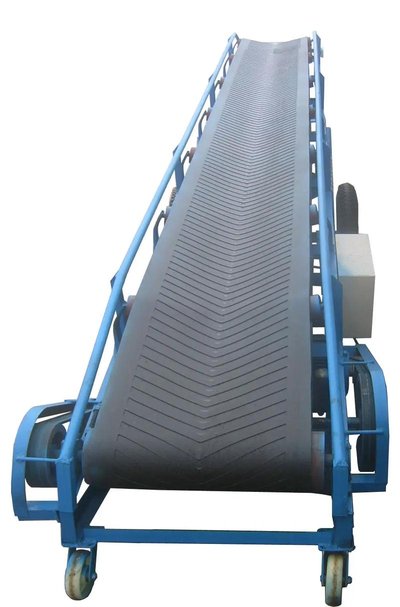
The global supply chain has faced unprecedented challenges in recent years, with disruptions ranging from port congestion to geopolitical tensions. For businesses shipping goods from China to Saudi Arabia, understanding potential delays and optimizing logistics solutions is critical to maintaining operational efficiency. As a trusted cargo agent specializing in Middle Eastern trade lanes, Winsail Logistics has compiled this guide to help you navigate current shipping dynamics and ensure timely freight delivery.
1. Current Shipping Landscape: Key Factors Influencing Delays
The route from China to Saudi Arabia involves multiple transit points, including major ports like Shanghai, Ningbo, and Jebel Ali, as well as inland transportation networks. Several factors contribute to delays:
1.1 Port Congestion and Infrastructure Constraints
Chinese ports such as Yantian and Shanghai have experienced periodic congestion due to surges in export volumes, labor shortages, and COVID-19-related restrictions. Similarly, Saudi Arabian ports like Jeddah Islamic Port and King Abdullah Port occasionally face bottlenecks, especially during peak seasons like Ramadan or Hajj.
Logistics solutions here include diversifying port selections—opting for less crowded terminals—and leveraging pre-clearance programs to expedite customs processes. A reliable freight service provider can analyze historical data to predict congestion patterns and recommend alternative routes.
1.2 Customs Clearance and Documentation
Strict regulatory requirements in Saudi Arabia, including SASO (Saudi Standards, Metrology, and Quality Organization) certifications and VAT compliance, can delay shipments if documents are incomplete or inaccurate. Partnering with an experienced cargo agent ensures adherence to local regulations, reducing the risk of hold-ups at the border.
1.3 Geopolitical and Environmental Factors
Tensions in the Red Sea region and seasonal weather events (e.g., sandstorms in Saudi Arabia or typhoons in China) may disrupt maritime schedules. Proactive logistics solutions involve real-time tracking and contingency planning, such as rerouting via alternative sea lanes or switching to air freight for urgent shipments.
2. Choosing the Right Freight Service: Air, Sea, or Rail?
Selecting the optimal mode of transportation is pivotal to minimizing delays. Each option has distinct advantages and challenges when shipping from China to Saudi Arabia:
2.1 Sea Freight: Cost-Effective but Time-Sensitive
Ocean shipping remains the backbone of China-Saudi Arabia trade, accounting for over 70% of total cargo volume. However, transit times average 20–30 days, with additional delays possible due to port delays or vessel schedule changes.
To mitigate risks:
- Opt for less-than-container load (LCL) or full container load (FCL) based on volume.
- Use freight services that offer guaranteed sailing schedules or priority loading for time-sensitive goods.
- Consider rail-sea intermodal solutions, which combine China’s extensive rail network with maritime routes to reduce transit time by up to 10 days.
2.2 Air Freight: Speed at a Premium
Air cargo is ideal for high-value or perishable items, with transit times as short as 3–7 days. However, capacity constraints and rising fuel costs have made air freight less predictable in recent years.
Logistics solutions for air shipments include:
- Charter flights for oversized or urgent cargo.
- Consolidation services to share costs with other shippers.
- Collaboration with airlines offering dedicated freighter services to Saudi Arabia’s major hubs (e.g., Riyadh and Jeddah).
2.3 Rail Freight: The Emerging Middle Ground
China’s Belt and Road Initiative has bolstered rail connectivity to the Middle East, with routes like the China-Europe-Middle East Rail Corridor offering a 15–18-day transit time. Rail is particularly advantageous for landlocked regions in Saudi Arabia, such as Dammam, where inland distribution is streamlined.

3. The Role of a Cargo Agent in Mitigating Delays
A competent cargo agent acts as a bridge between shippers and carriers, offering end-to-end visibility and crisis management. Here’s how they add value:
3.1 Expertise in Local Regulations
Navigating Saudi Arabia’s customs procedures requires in-depth knowledge of documentation, duties, and prohibited items. A seasoned cargo agent ensures compliance with SASO standards, SABER platform registrations, and halal certifications for food products.
3.2 Proactive Risk Management
By monitoring global events—such as port strikes or sanctions—a cargo agent can recommend preemptive actions, like stockpiling inventory or switching carriers. They also provide insurance options to protect against unforeseen delays or damages.
3.3 Technology-Driven Efficiency
Modern logistics solutions incorporate digital tools like IoT tracking, blockchain for secure documentation, and AI-powered analytics to predict delays. For instance, Winsail Logistics’ platform offers real-time updates on shipment status, enabling clients to adjust production schedules proactively.
4. Case Study: Overcoming a 14-Day Delay
In 2023, a client shipping automotive parts from Guangzhou to Dammam faced a sudden vessel diversion due to Red Sea security concerns. The original 25-day sea freight timeline extended to 39 days, risking production line shutdowns.
Our Solution:
- Immediate Assessment: We identified air freight as the only viable alternative but faced capacity shortages.
- Creative Routing: Partnered with a charter operator to fly cargo from Hong Kong to Dubai, then trucked it to Saudi Arabia—cutting delay impact by 60%.
- Cost Optimization: Negotiated bulk rates with the charter company and shared savings with the client.
This example underscores the importance of agility and a robust network when selecting a freight service provider.
5. Future Trends: What to Expect in China-Saudi Arabia Logistics
The logistics industry is evolving rapidly, driven by technological advancements and shifting trade policies. Key trends include:
5.1 Green Logistics Initiatives
Saudi Arabia’s Vision 2030 prioritizes sustainable infrastructure, prompting carriers to adopt low-emission vessels and electric trucks. Shippers can expect stricter carbon reporting requirements and incentives for eco-friendly logistics solutions.
5.2 Digitalization of Trade
Blockchain platforms like TradeTrust are simplifying document exchange, while Saudi Customs’ “FASAH” portal accelerates clearance for pre-approved shippers.
5.3 Nearshoring and Reshoring
While China remains Saudi Arabia’s top trading partner, some companies are diversifying suppliers to Southeast Asia or Africa. This shift will redefine freight service demands, emphasizing flexibility over volume.
Conclusion: Navigating the Future with Confidence
Delays in shipping from China to Saudi Arabia are inevitable but manageable with the right logistics solutions. By partnering with a knowledgeable cargo agent, leveraging multimodal transport, and staying abreast of regulatory changes, businesses can turn potential disruptions into opportunities for growth.
For tailored freight service quotes or consultations, visit Winsail Logistics to explore how we can streamline your supply chain. Our team of experts is dedicated to delivering reliability, transparency, and innovation in every shipment.
-
 Ocean Lcl Freight Service Inconel 625 Wire from China to Chennai2025-09-30
Ocean Lcl Freight Service Inconel 625 Wire from China to Chennai2025-09-30 -
 Ocean Freight Service Cabinet Door from China to Dar Es Salaam2025-09-29
Ocean Freight Service Cabinet Door from China to Dar Es Salaam2025-09-29 -
 Door to Door by Ocean Freight Fixture Luminaries from China to Jeddah2025-09-28
Door to Door by Ocean Freight Fixture Luminaries from China to Jeddah2025-09-28 -
 Ocean Freight Service Sofa From China To Jebel Ali2025-09-26
Ocean Freight Service Sofa From China To Jebel Ali2025-09-26 -
 International Express Conveyor Belt From China To India2025-09-25
International Express Conveyor Belt From China To India2025-09-25 -
 Ocean Lcl Freight Service Medical Device From Shanghai to Jebel ali2025-09-25
Ocean Lcl Freight Service Medical Device From Shanghai to Jebel ali2025-09-25

